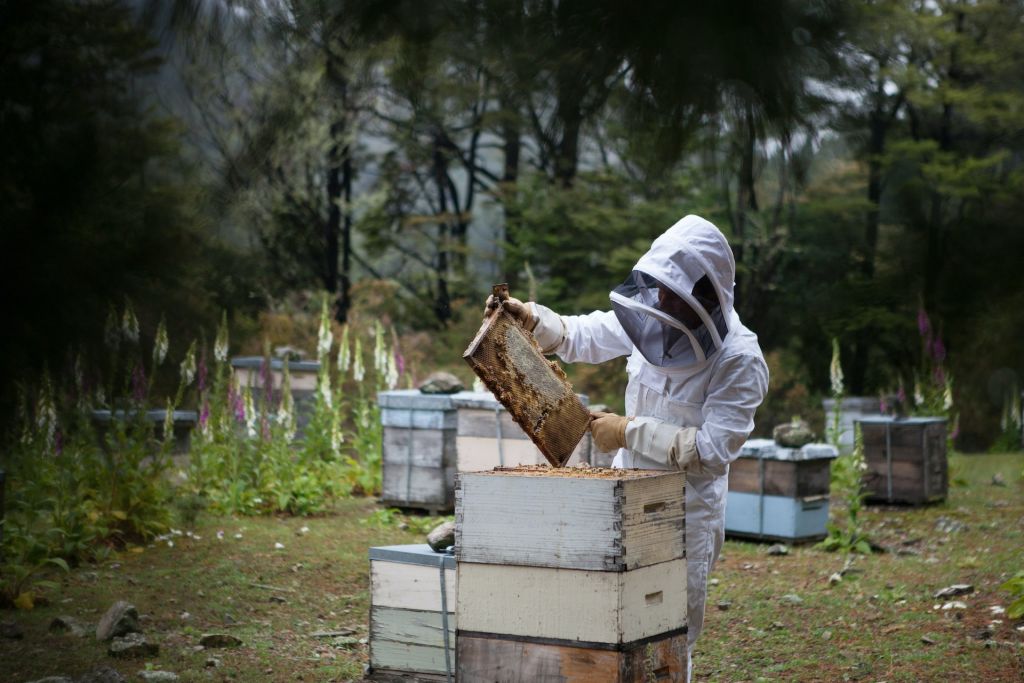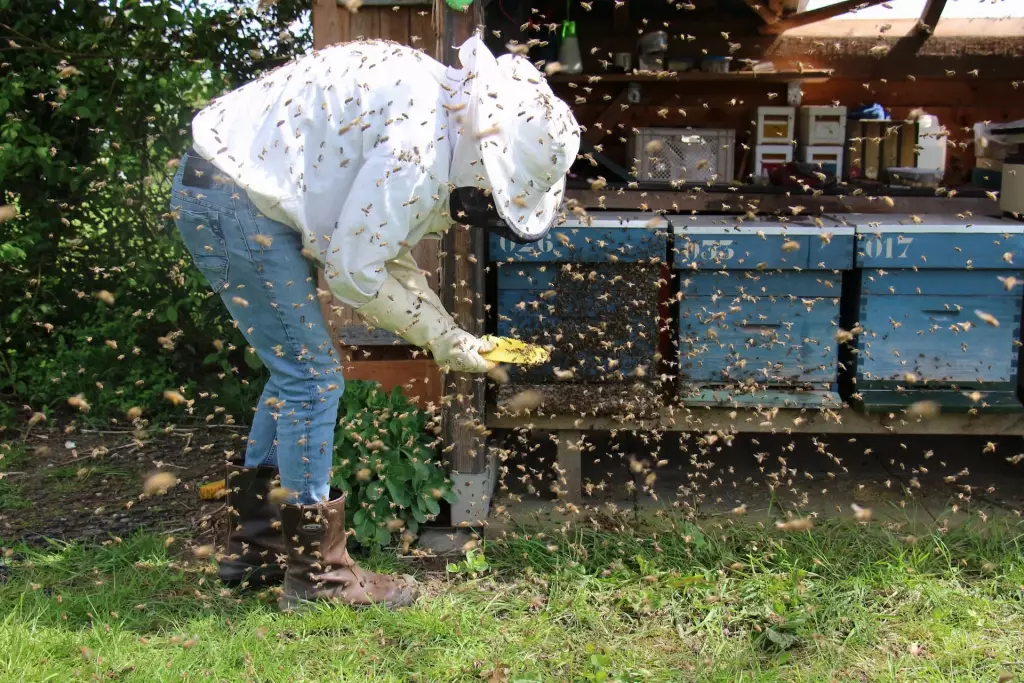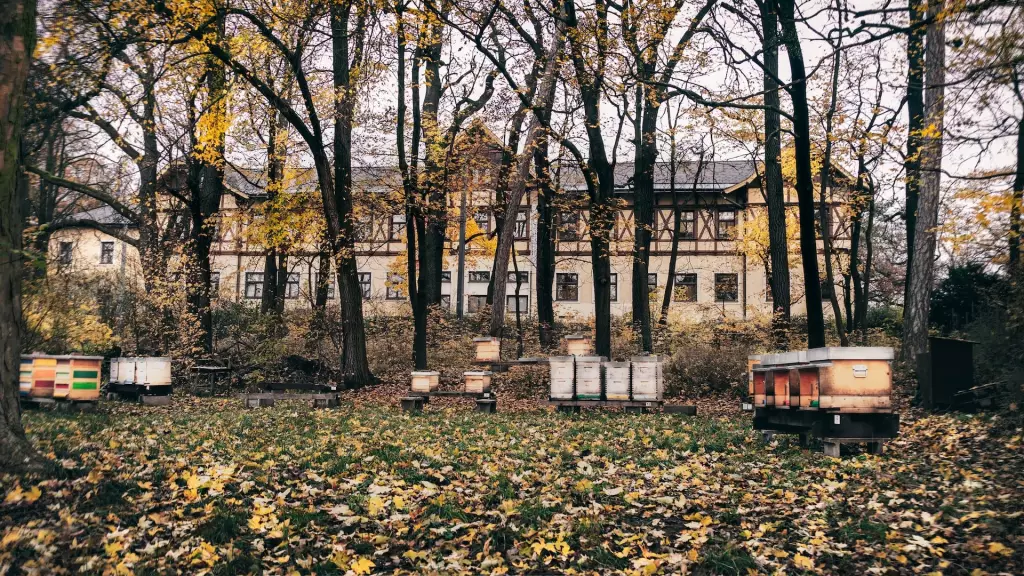How Many Beehives Can You Have per Acre?
Bees need space too! Find out how many hives you can maintain & the space you have for each one. Here’s a glimpse at how many beehives per acre you can set up.
Non-commercial beekeepers can have two hives for every acre of land. It’s important to take a look at the local area and see whether your bees have an abundance of flora and water sources to sustain themselves. If there are too many hives, the honey crop will drop.
Your hives should be evenly spaced out and honeybees need plenty of native flora to draw nectar and pollen. Here's a comprehensive guide filled with more tips on how you can set up the perfect space for your apiary.
Summary
- Non-commercial beekeepers can have two hives per one acre.
- Hive density depends on the variety and number of flora in the local area. This can increase or decrease based on the local flora and crops’ pollination efficiency.
- Most neighbors won’t mind having an apiary nearby, but you will need to be mindful of where you put your hives and how it grows to prevent accidents from happening.
- Beekeeping is legal in most areas, but check with your local ordinances for guidance regarding setting up an apiary.

On this page:
Defining the Apiary Site
Garden or Home Apiary
Most hobbyists end up going for a home apiary. This is when the hives are located on their land, which is associated with the beekeeper’s home. Aside from home apiaries, there are out-apiaries, where hives are on land that is not near nor associated with the beekeeper’s home; and seasonal apiaries, which are out-apiaries that are only set up in a specific location for part of the honey season.

Urban or Rural Communities
Surprisingly, honey bees thrive in cities and suburbs. They may often survive the winter better in these environments. This is because there is usually a variety of flowering plants and reduced competition from feral bees in the city. As long as you are fully compliant with zoning codes and city ordinances that govern beekeeping, your apiary should be successful.
Be mindful to prevent swarming in urban settings as well. Non-beekeepers may be horrified to say thousands of bees congregating and forming a buzzing ball in their backyard. They may see these bees as a threat and take drastic measures to remove them; as a result, both the bees and your neighbor are exposed to increased risk.
Make sure that you track the growth of each colony, split strong hives, expand the brood nest, and requeen frequently with young queens to manage hive growth. Swarming is natural behavior for bees, so always have swarm-catching gear ready in the early spring.
If you live in a rural area, bees may struggle with finding enough food because there is usually only one type of crop being grown. The best environment would be a naturalized prairie landscape with mixed hardwood tree lines. Most rural communities will not have any legal requirements for apiaries, but you will still need to be mindful of the safety of other people and animals in the community.
Safety
Some bees will become aggressive when they are placed near horses or cattle. They may also attack grazing animals that wander too close to their hives. Invest in an electric fence placed 20 feet out from the hives to separate any livestock from your colonies, and never keep an apiary near penned animals that cannot escape attacking bees. Honeybees are usually gentle creatures, but they may decide to launch an attack because of a nearby disturbance caused by the penned animal.
If the apiary is near a public access area, you need to install a 6-foot barrier several feet in front of the hive entrance. This pushes bees to fly up and over the heads of pedestrians. Hives should also be kept away from roads, because bees can readily be killed in swarms as they cross the path of vehicles.
Be very selective of the breed you choose to keep if you plan on setting up in an urban area so that they do not become a threat to any neighbors or passersby.
Finally, even with the best intentions, things don’t always go according to plan. This holds true for all beekeepers, even experienced ones. Maintain good relations with your neighbors by frequently checking up on their wellbeing and thoughts on your colony, so that you can be proactive about anything that can go wrong.

Choosing a Location
Food and Water
Bees need a location with plenty of opportunities to forage for food and water. The best way to find out is to take a quick walk around the area a couple of times a year and observing the flora, through the spring, summer, and autumn. However, if this is not possible then an aerial photograph from Google Earth or a landranger map can help. Look for variety in flora across seasons and over the wider area before you make your decision.
Bees also need water to regulate hive temperature and to feed. A colony needs about 25 litres of water every year to survive. Nearby ponds and lakes are a good source, but if you live in an urban area, an outdoor tap could also be used to create puddles for bees to get water from.
Accessibility
The closer you can get a vehicle to the hives, the better. You may need to transfer the hives or harvest products from them, and they can get heavy. For example, a bee super (the boxes placed on a hive for bees to store honey) can weigh as much as 13.5 kg. That’s the average weight of a two to three-year-old child!
Hive Orientation and Placement
Ideally, your hive’s entrance should face somewhere between the south and east ordinals. An entrance towards the east helps facilitate earlier foraging flights, while south-facing entrances encourage longer foraging periods once the temperature drops.
You can place hives directly in the sun or along a tree line; however, wooded areas are not recommended due to the heightened risk of exposure to other pests, like hive beetles and ants.
Finally, a line of defense along the north side, such a trees, shrubs, or even a building, can buffer the hive from the wind during the winter months and reduce colony loss.
How Crops Affect Beehive Density
If you are setting up an apiary in an area with crops, this can increase or decrease the number of hives per acre depending on how attractive the crop is to the bees. Some crops are ripe for pollination, while others do the opposite: reduce pollination efficiency and require more hives per acre to compensate. Here’s a quick look at some common crops and the suggested hive density.
| Crop | Suggested Hive per Acre |
|---|---|
| Apple | 1 |
| Blueberry | 4 |
| Cantaloupe | 2 |
| Cucumber | 2 |
| Squash | 1 |
| Watermelon | 1 |
Beehives per Acre for AG Exemption
If you live in Texas, beekeeping qualifies for an Agricultural Valuation (AG Exemption) on property taxes. This means you can get a tax break just from having bees on your property. You don’t even have to own the bees yourself—you can lease them from a beekeeper and still reap the benefits.
You’ll need to get in touch with your local appraisal district for more information on the minimum requirements for AG Exemption. Guidance may vary widely from one area to another.
Are Beehives Legal in Residential Areas?
If you are based in the US, then beekeeping is legal in residential areas. However, each state has different ordinances you need to follow. This website has a handy list of all the links to the state pages on beekeeping.
Most backyard beekeepers have one to two acres of land, with two or three hives. Aside from complying with local ordinances, it’s important to build a good relationship with your neighbors first. While bees bring plenty of benefits to the locality, some people may not welcome their presence. If your neighbors have a swimming pool, then they may find themselves dealing with swarms of bees; honey bees love chlorine and salt water, and they will gravitate to the pool for a drink.
Get your neighbors’ verbal approval for your backyard beehive before you start to avoid running into any complications down the road. Being a beekeeper may just be a hobby for some people, but it also comes with a lot of responsibility. You need to be mindful of how your bees affect the local ecosystem and the lives of other people living in the area.